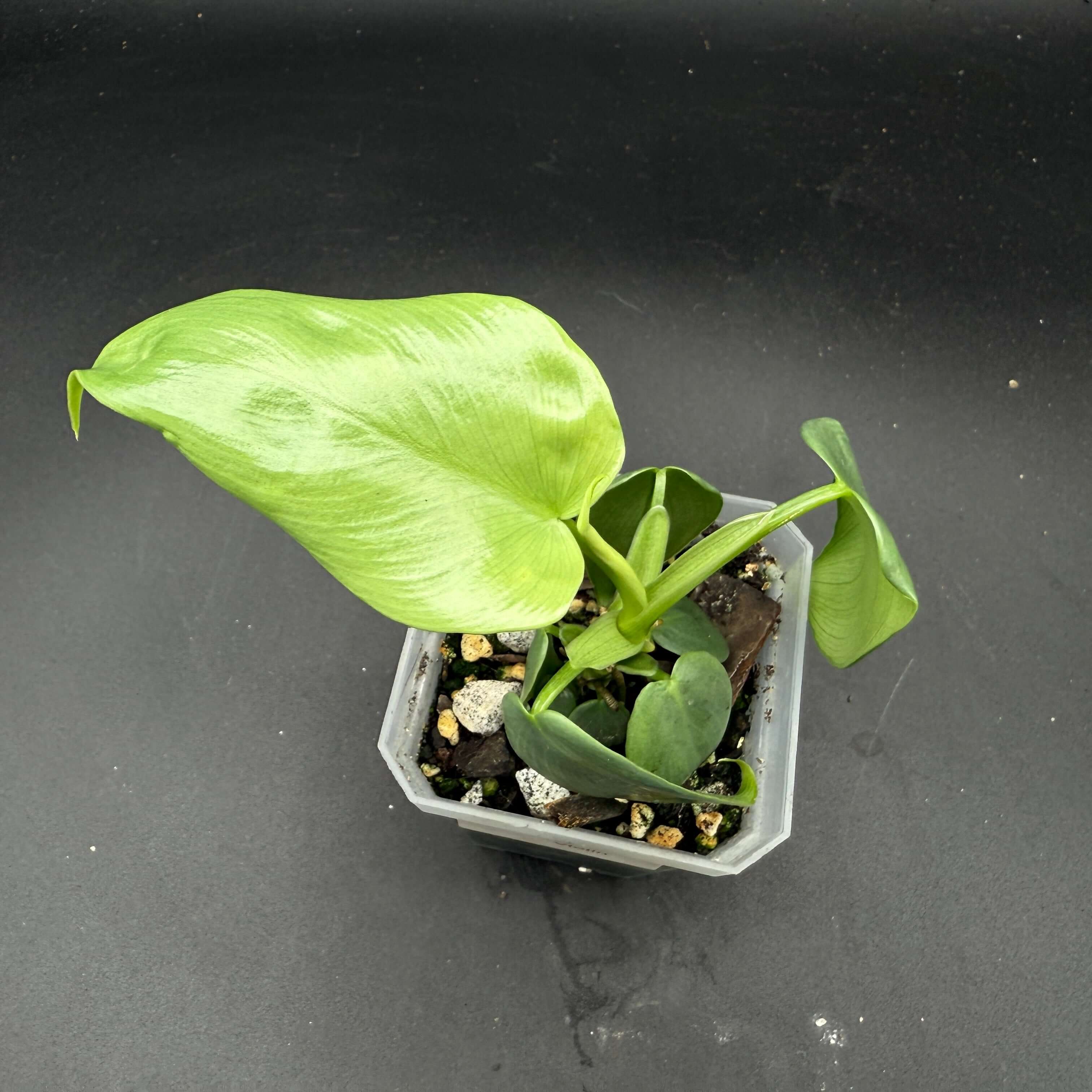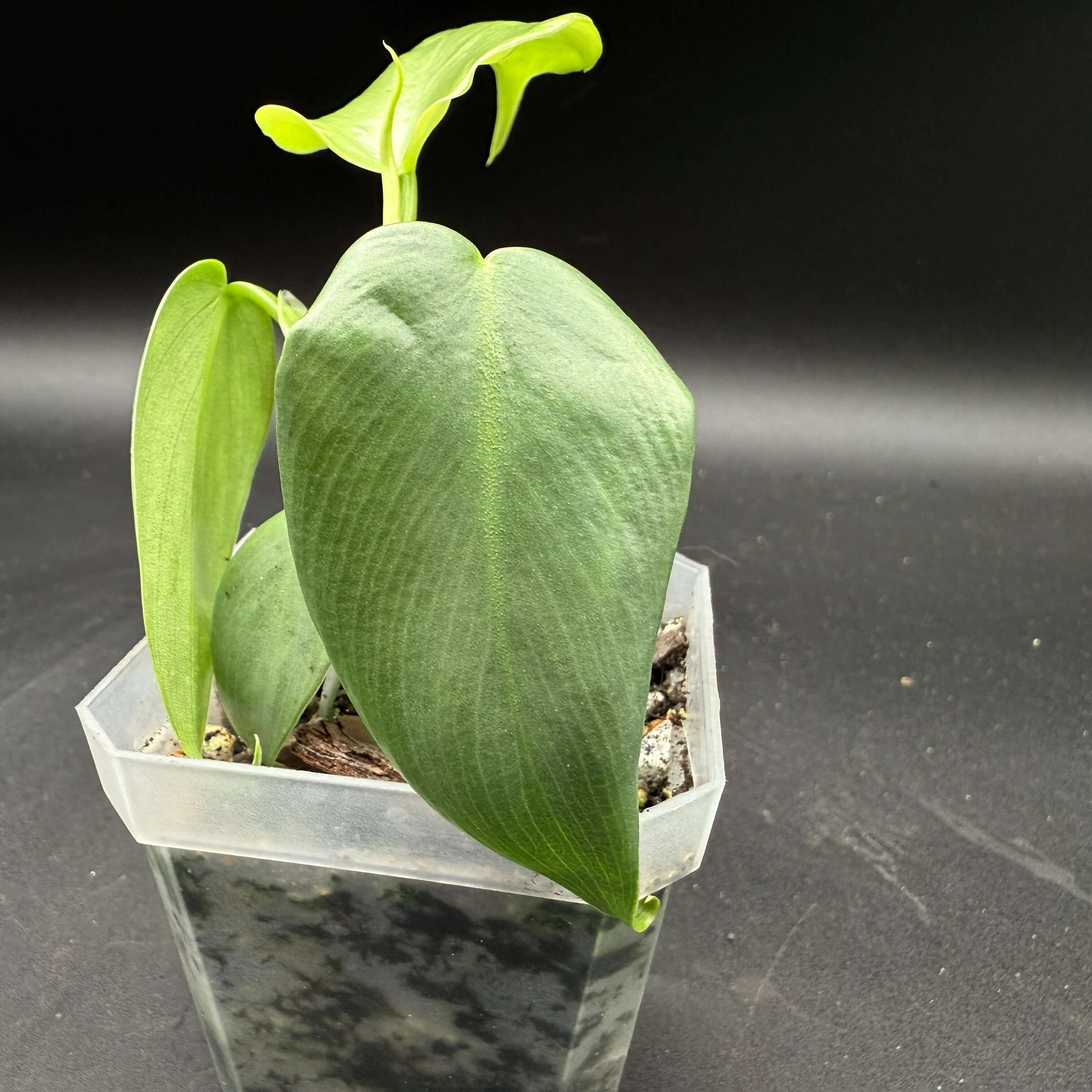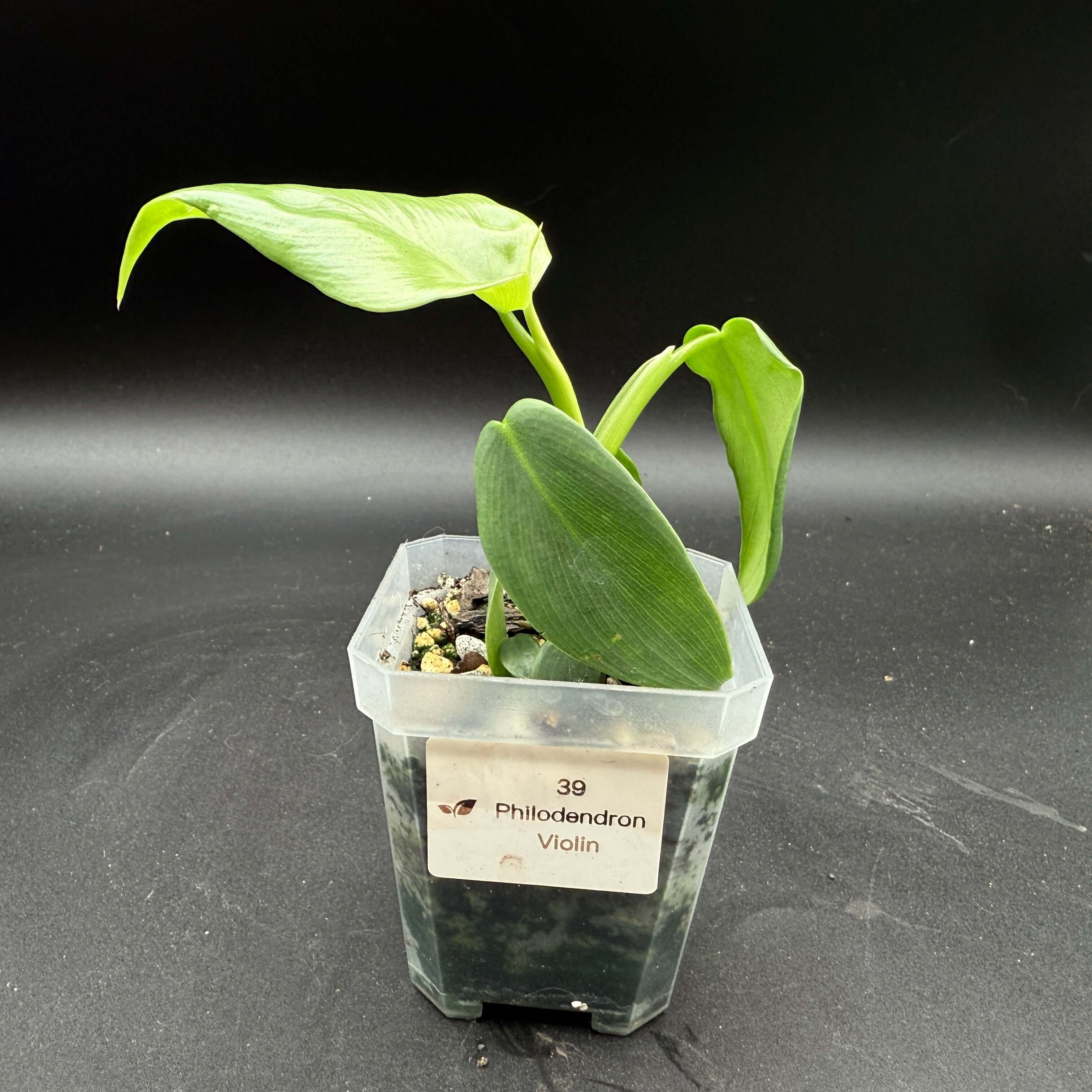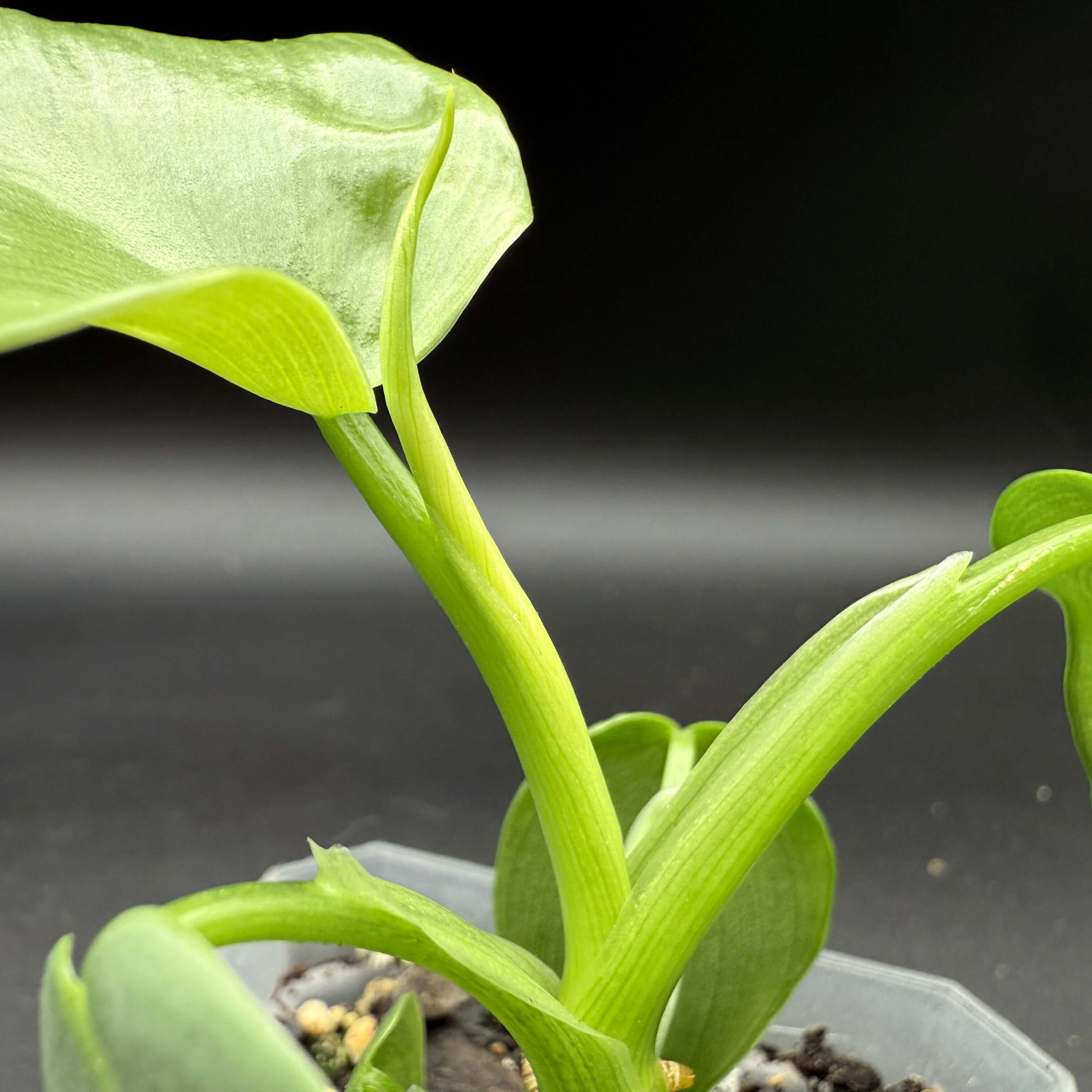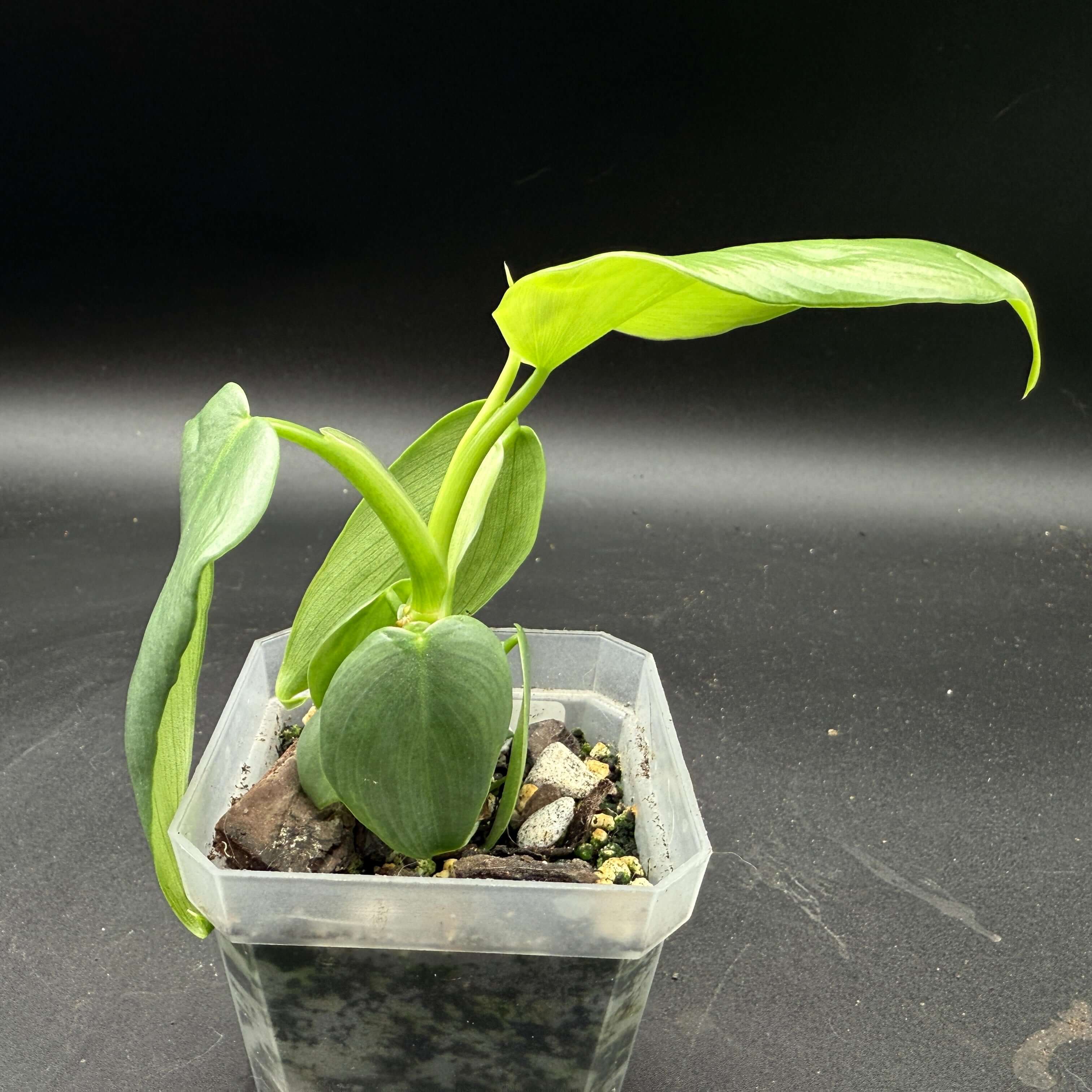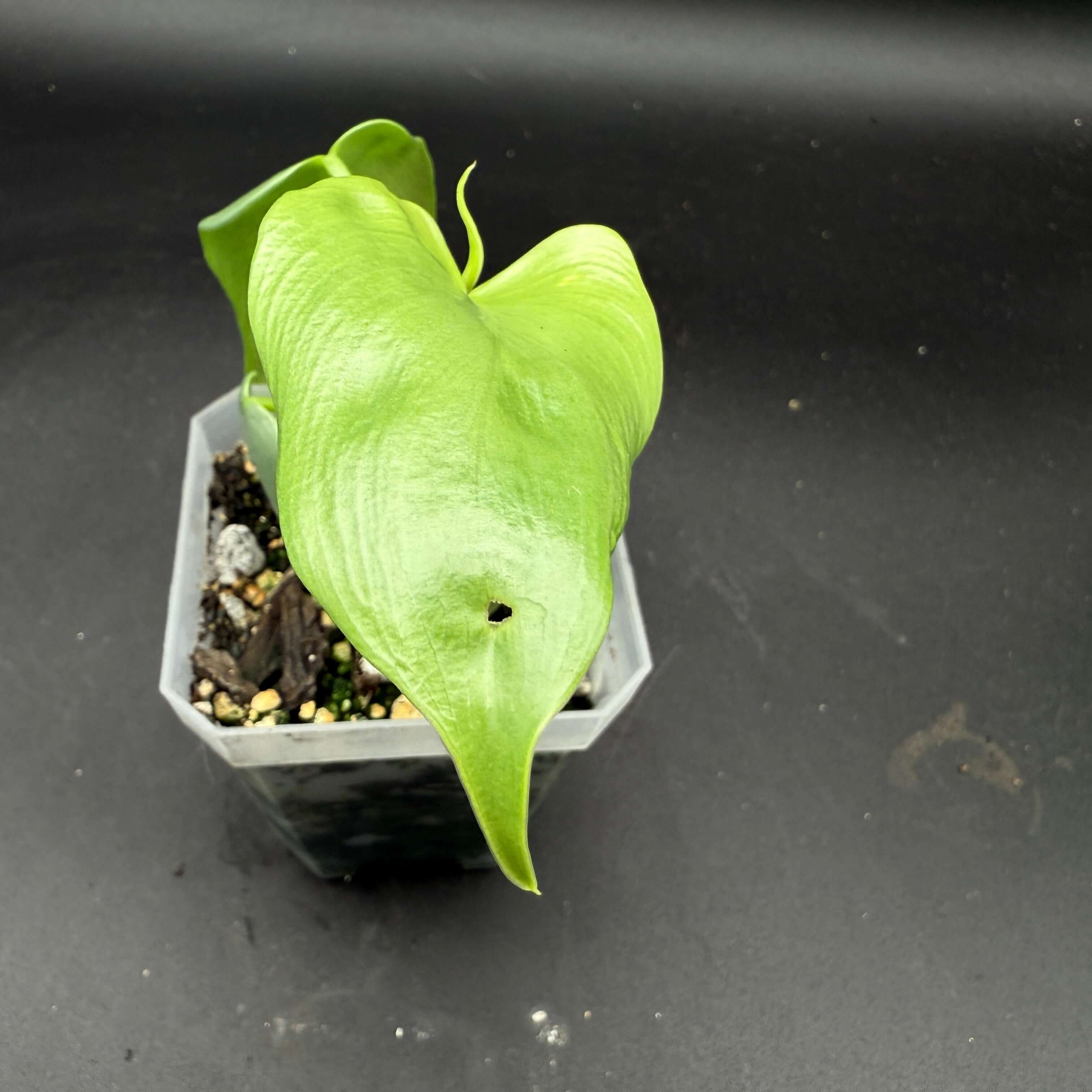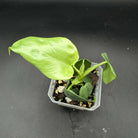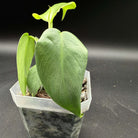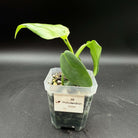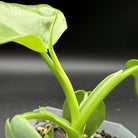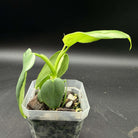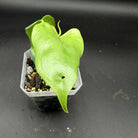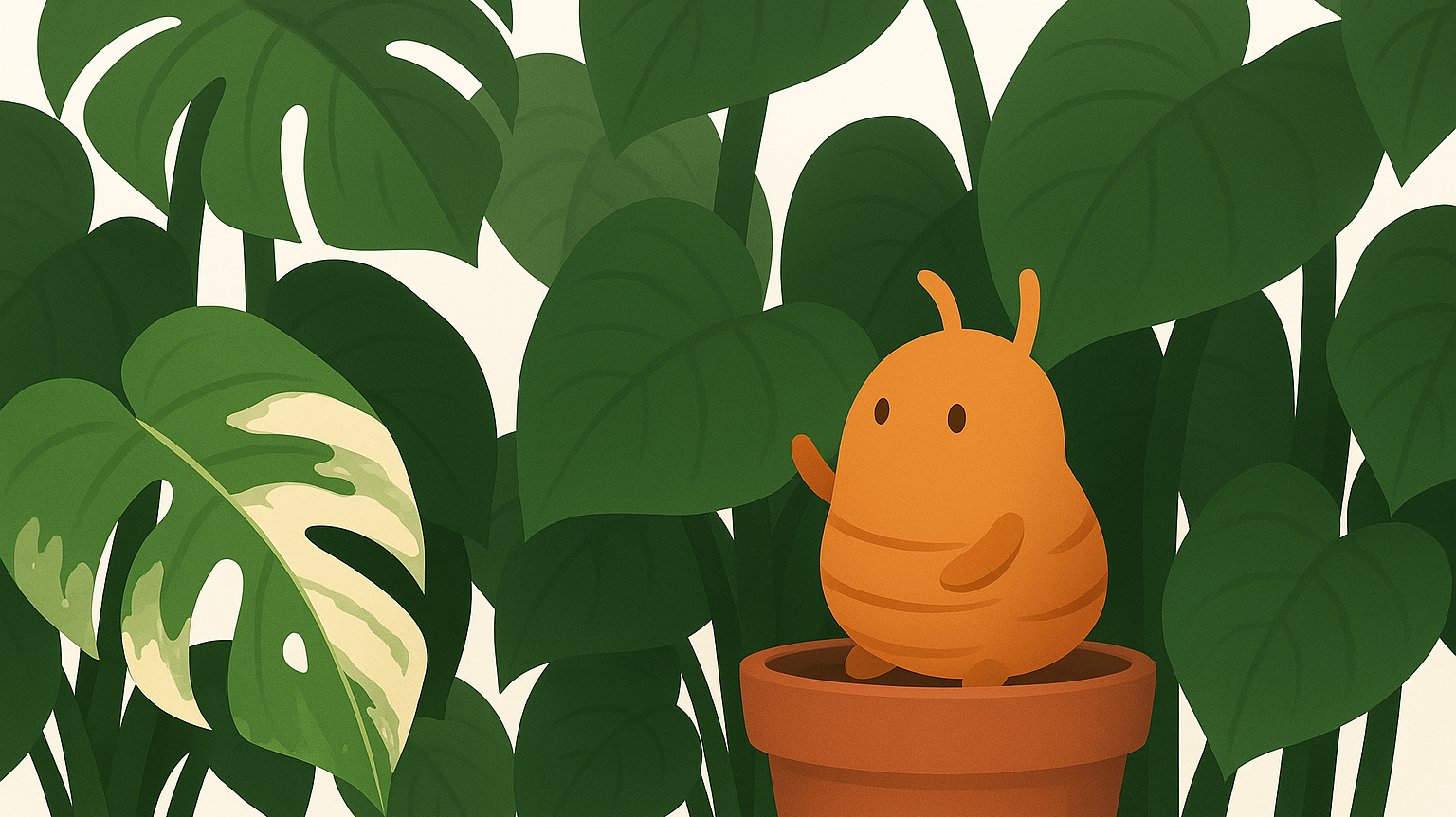Philodendron bipennifolium 'Violin' (39)
The Philodendron bipennifolium 'Violin' is a striking tropical aroid celebrated for its unique, violin-shaped leaves. Its deeply lobed, glossy green foliage resembles the elegant curves of a violin, giving it both artistic appeal and a distinctive presence in any collection. Known for its upright and climbing growth habit, this plant thrives with support, allowing its dramatic foliage to flourish.
Notable Features:
- Violin-Shaped Leaves: The deeply lobed leaves mimic the body of a violin, creating a bold and sculptural look.
- Glossy Green Foliage: The smooth, shiny texture adds a vibrant and polished aesthetic to any indoor garden.
- Climbing Growth Habit: Thrives with the support of a moss pole or trellis, enabling it to produce larger, more mature leaves as it grows.
- Highly Collectible: Its rare and distinctive appearance makes it a sought-after addition for philodendron enthusiasts.
Interesting Facts:
- Native to the tropical rainforests of South America, the Philodendron bipennifolium thrives in warm, humid conditions that mimic its natural habitat.
- The unique leaf shape becomes more pronounced as the plant matures, making its evolution a rewarding experience for collectors.
- Commonly referred to as the "Violin Philodendron" due to its leaf shape, this plant is both a conversation starter and a centerpiece.
Shipping Note:
While we carefully package your plant for safe transit, minor leaf imperfections may occur. With proper care, the Philodendron bipennifolium 'Violin' will thrive and continue to develop its signature foliage.
Blog posts
What Is an Aroid?
Aroids evolved to solve the hardest problem in the rainforest—how to live with too little light and too much competition. The result? Some of the most beautiful plants on Earth.
How to Keep Variegated Leaves Through Winter
Winter light can turn your prized variegated leaves solid green. It isn’t bad care—it’s survival. Learn why plants shift their patterns when days get shorter, and how steady light and warmth can help keep the white in your Monstera or Philodendron from fading away.
Can Plants Hear Touch?
Plants don’t have ears, but they aren’t deaf to their surroundings. From sensing a fingertip brush to detecting the vibrations of chewing insects, plants register touch and sound through finely tuned cellular systems — and even change how they grow in response.

